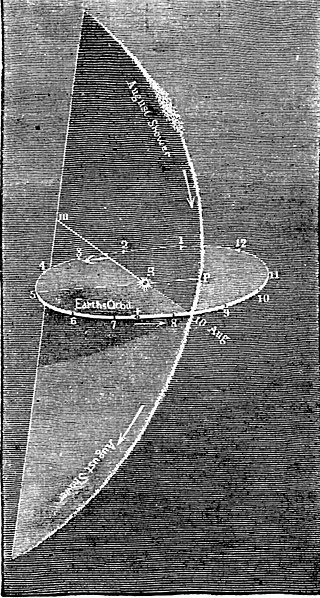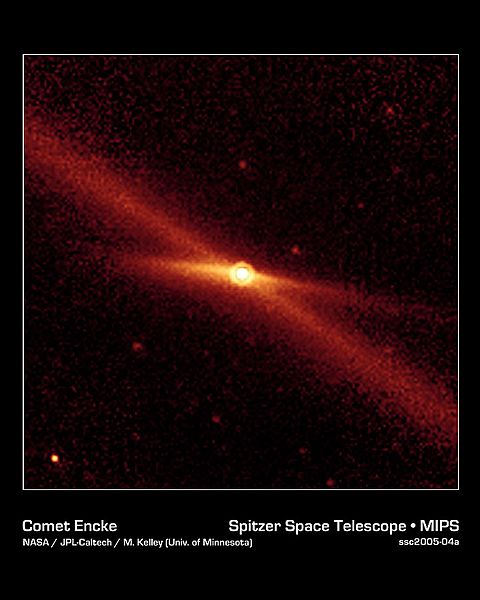The Leonids are a prolific annual meteor shower associated with the comet Tempel–Tuttle, and are also known for their spectacular meteor storms that occur about every 33 years. The Leonids get their name from the location of their radiant in the constellation Leo: the meteors appear to radiate from that point in the sky. Their proper Greek name should be Leontids, but the word was initially constructed as a Greek/Latin hybrid and it has been used since. The meteor shower peak should be on 17 November, but any outburst in 2023 is likely to be from the 1767 meteoroid stream.
A Leonid meteor during the peak of the Leonids in 2009
A famous depiction of the 1833 meteor storm, produced in 1889 for the Seventh-day Adventist book Bible Readings for the Home Circle.
Woodcut print depicts the shower as seen at Niagara Falls, New York. Mechanics' Magazine said this illustration was made by an editor named Pickering "who witnessed the scene."
The November Meteors by Étienne Léopold Trouvelot, 1868
A meteor shower is a celestial event in which a number of meteors are observed to radiate, or originate, from one point in the night sky. These meteors are caused by streams of cosmic debris called meteoroids entering Earth's atmosphere at extremely high speeds on parallel trajectories. Most meteors are smaller than a grain of sand, so almost all of them disintegrate and never hit the Earth's surface. Very intense or unusual meteor showers are known as meteor outbursts and meteor storms, which produce at least 1,000 meteors an hour, most notably from the Leonids. The Meteor Data Centre lists over 900 suspected meteor showers of which about 100 are well established. Several organizations point to viewing opportunities on the Internet. NASA maintains a daily map of active meteor showers.
Eta Aquariids meteor shower, with zodiacal light and planets marked and labeled
Diagram from 1872
Meteor shower on chart
Comet Encke's meteoroid trail is the diagonal red glow.








